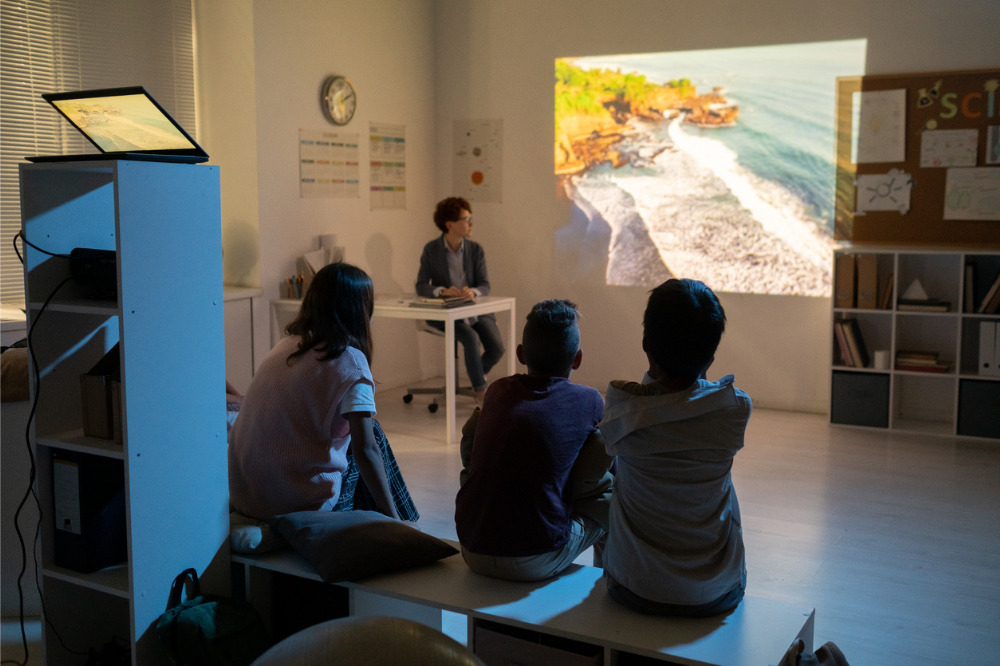
In 2018, a report by Cisco predicted that 82% of all created content would be video. However, the COVID-19 pandemic shifted learning from face-to-face to online over the course of 2020, where ClickView saw a staggering 138% increase in video demand.
Changing video consumption patterns, together with the steadily increasing use of video for educational purposes, have inspired a growing body of research focused on measuring video’s effectiveness as a learning aid.
Most of the research to date has focussed on higher education settings. Given that video is heavily used in the K-12 context, it’s fair to say that the conclusions drawn from higher education studies may not be as relevant for school learners.
To address this gap, Tara Walsh, researcher and ClickView’s Global Education Lead, and Professor Michael Henderson from Monash University undertook a broad literature review to examine the empirical research available on the impact of instructional video on school-aged students.
The review found that of the many multimedia principles that have been identified, there is no one magic video design element that enhances learning, but it is different combinations that can be very effective.
Tara Walsh, Global Education Lead at educational video platform ClickView, which is turning passive viewing into active learning in classrooms across Australia says one of the most important instructional video design elements that will serve the 2022 classroom is coherence.
“There’s a lot of low-quality content out there, which you may find on free public video platforms like YouTube. Low-quality videos for example, those with excess graphics, words and phrases, don’t support the video’s instructional goals may lead to poorer self-regulation. While quality instructional video omits seductive details and extraneous information will help viewers learn.” Walsh told The Educator.
“Dr Brandon Smith, general academic paediatrics fellow in the Department of Paediatrics at Johns Hopkins University in Baltimore, states that ‘excessive screen time with low-quality media may contribute to poorer language development in certain children.’ This highlights the importance of high quality, coherent and vetted content which ClickView prides itself on.”
Another important instructional video design element, says Walsh, is video length reduction, segmentation and integrated learning activities.
“Learner's today are used to consuming shorter video. The popularity of TikTok highlights this. Shorter, segmented, and interactive videos, all help students learn. As these types of approaches consider the principles of our working memory. When we're taking in new information, it takes a toll on our cognitive load. So, we need to break up the learning. Videos that are either short, segmented or include interactivity have been shown in the K-12 and higher education research to aid the learning process.” she said.
“And that's what we do at ClickView. It's an important part of our production and curation strategy.”
Walsh said another one of the review’s key findings was that it’s not just video design that matters, educators must consider learning design more carefully if their classes are to be more effective.
Walsh said learning with video “isn't just about turning on a video and sitting back and watching.”
“Our review highlighted the importance of pre-training before using video in the classroom. That means pre-training students on how to use the tool effectively, especially if the viewing experience is independent,” she explained.
“In the past two years we’ve already seen a significant shift toward a hybrid learning model, one that was a direct response to the pandemic. With this increased use of video in the classroom, it's important that the education community understands how to create, curate and use video for maximum impact.”
Walsh said given current research and trends, differentiation, personalisation, interactivity and social emotional learning will “heavily influence the learning design of the future”.
“But most importantly, we think a student-centric focus aka shifting focus away from the teacher and having a laser focus on the learner and the learner’s overall experience will be a core focus of the future of learning design.”


